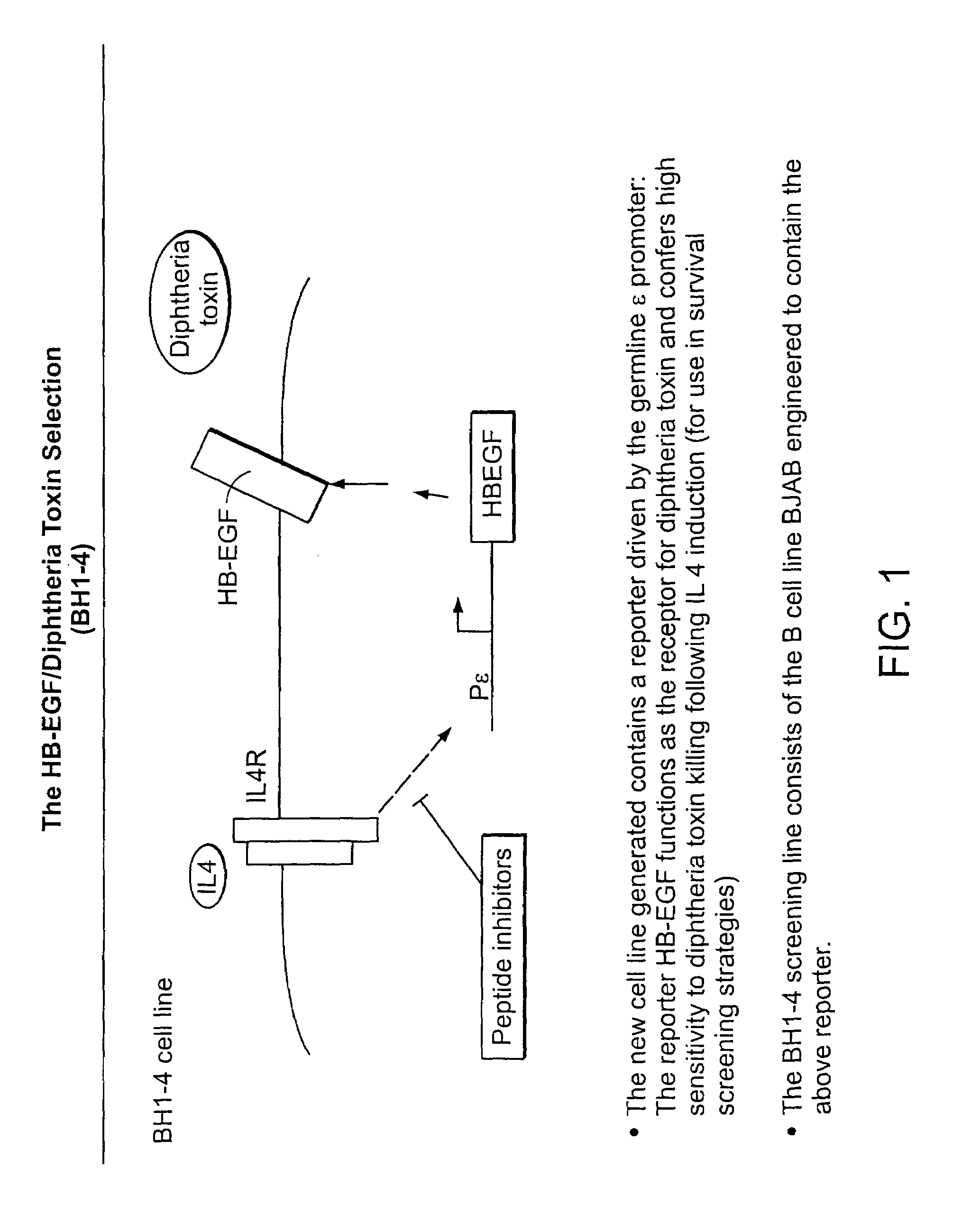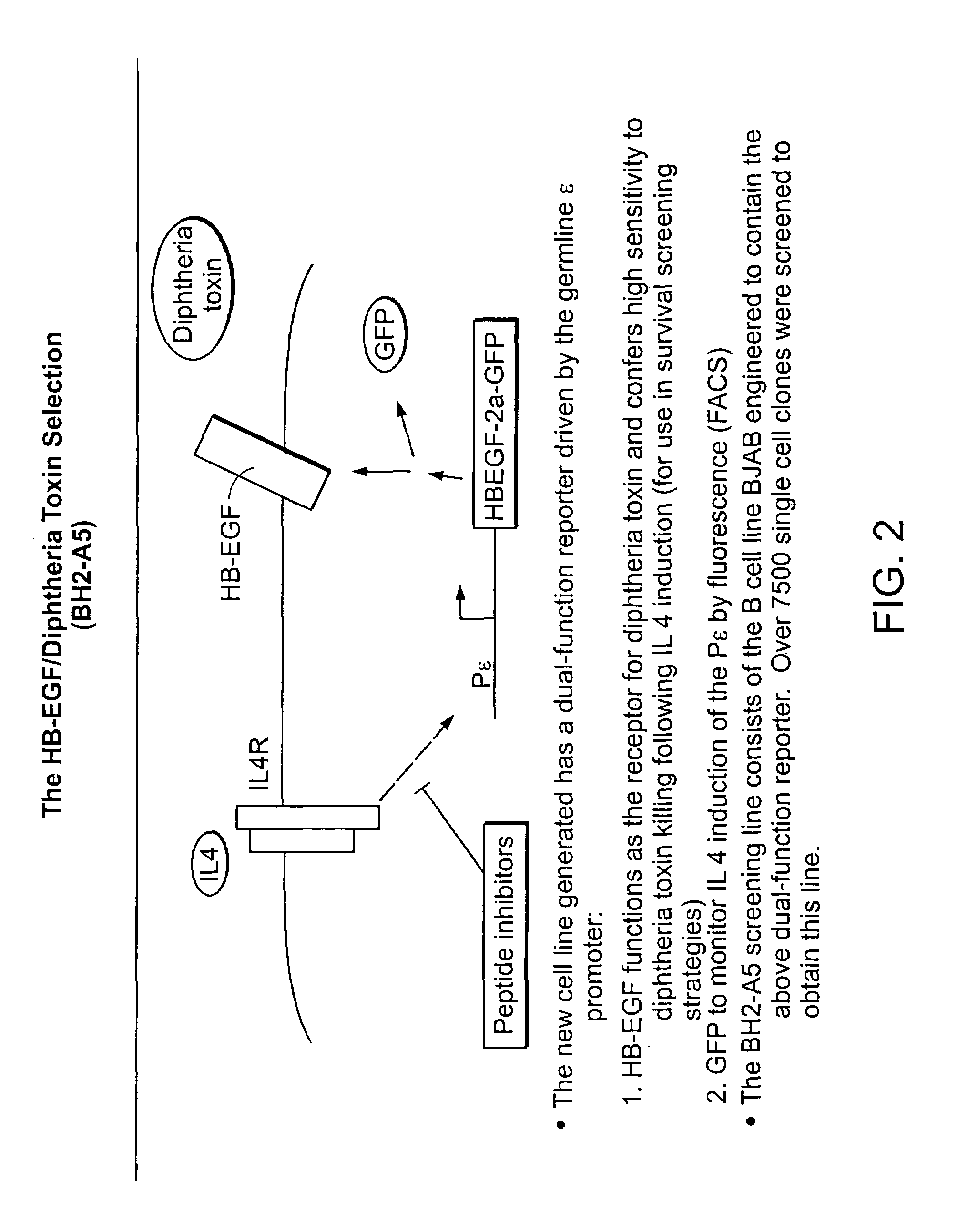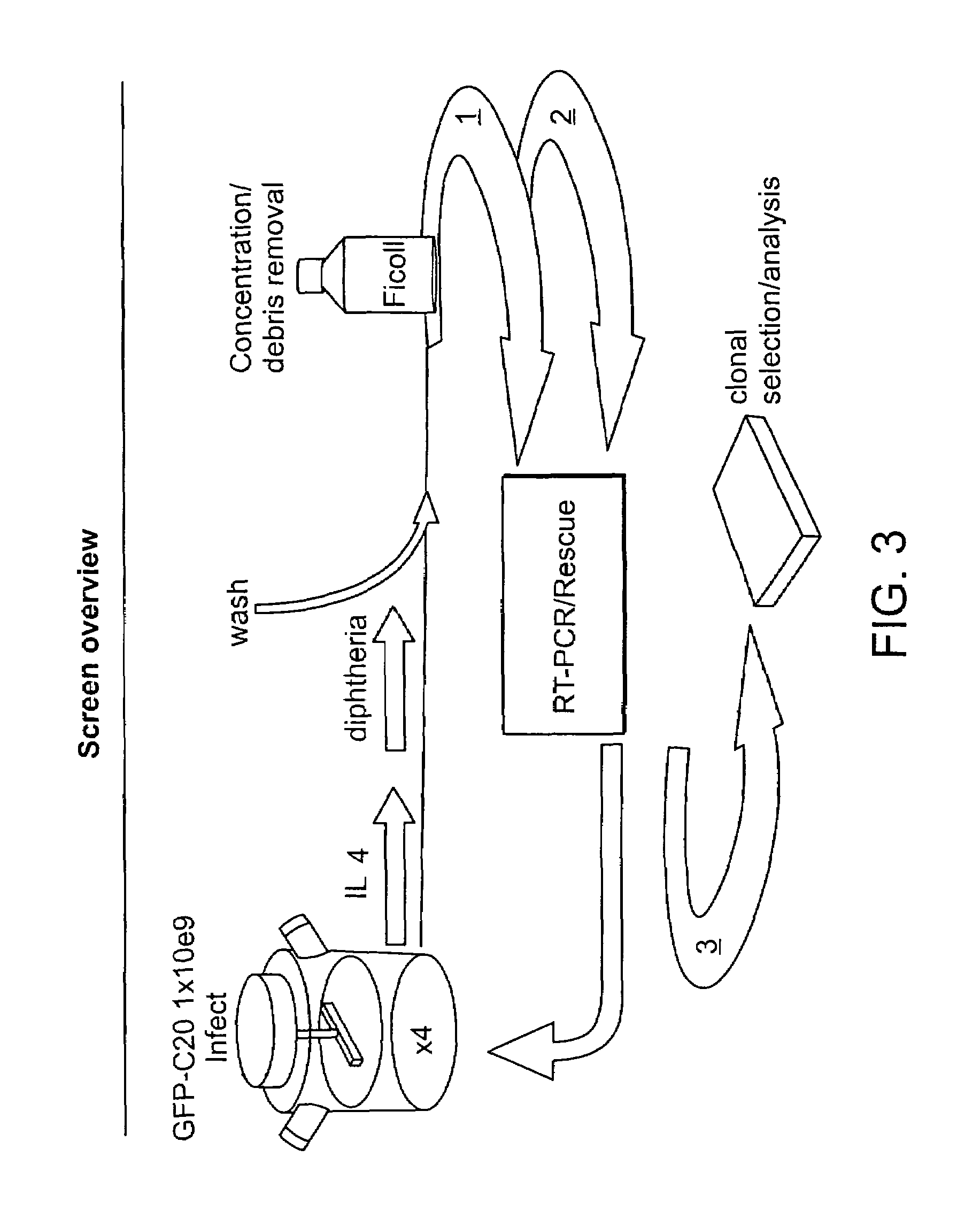Methods and compositions for screening for altered cellular phenotypes
a cellular phenotype and composition technology, applied in the field of screening for altered cellular phenotypes, can solve the problems of low level of induction, difficult to detect iptg in eukaryotic cells, and inefficient nucleic acid expression inducers, etc., and achieve the effect of reducing the level of cd69
- Summary
- Abstract
- Description
- Claims
- Application Information
AI Technical Summary
Benefits of technology
Problems solved by technology
Method used
Image
Examples
example 1
[0299]Construction of BH-1-4 and BH2-A5 cell lines for use in methods for screening for an altered cellular phenotype.
[0300]Cell line BH-1-4 The novel cell line, BH-1-4 was constructed by engineering the B cell line BJAB to contain the cDNA encoding the reporter protein heparin-binding epidermal-growth-factor-like growth factor (HBEGF) operably linked to an interleukin 4 (IL4) inducible germline promoter, the epsilon promoter (Pε) (see FIG. 1). The epsilon promoter was activated by contacting the cells with the stimulator IL4. In this cell line, IL4 binds to IL4 receptors (IL4R) expressed on the cell surface and the IL4R mediates transduction and activation of the epsilon promoter by IL4.
[0301]HBEGF functions as the receptor for diphtheria toxin (“dip” or “dt”). Diphtheria toxin is a 535 amino acid protein consisting of three domains. The receptor binding domain (residues 387–535) binds to BEGF. The transmembrane domain, T, comprising residues 200–378, is responsible for creating a ...
example 2
[0305]Screening for an altered cellular phenotype using known bioactive agents, SOCS1 and STAT6Δ (a C-terminal truncated version of STAT6), as positive controls for the method of screening.
[0306]STAT6 (signal transducer and activator of transcription 6) mediates the response of cytokines like IL4 and SOCS1 (suppressor of cytokine signaling) and STAT6? Are known inhibitors of IL4 signal transduction. In the BH1-4 or BH2-A5 cells lines of the present invention, SOCS1 and STAT6Δ each inhibit the IL4 inducible expression of HBEGF (and SOCS1 is a stronger inhibitor than STAT6Δ).
[0307]As depicted in FIG. 4, the following five different retroviral vectors were constructed as positive controls for the screening assay, and are the encoded GFP, SOCS1, STAT6Δ, and / or ires are operably linked to a promoter in the retroviral vector: the retroviral vector cGFP contains the GFP; the retroviral vector SOCS1-ires-GFP contains, from 5′ to 3′ (and operably linked), SOCS1, internal ribosomal entry site...
example 3
[0311]Enrichment of inhibitors of IL4 signaling in BH1-4 or BH2-A5 cell lines using SOCS1.
[0312]To examine the degree of enrichment that could be achieved by the above-described IL4-diphtheria selection assay, BH1-4 and BH2-A5 cell populations were “spiked” with BH1-4 and BH2-A5 cells that had been infected with the retroviral construct SOCS1-ires-GFP, and the following dilutions of the SOCS-infected cells with uninfected cells (i.e., BH2-A5 and BH1-4 cells not infected with a SOCS1 retroviral construct) were made:[0313]1:10[0314]1:100[0315]1:1000[0316]1:10,000.
As depicted in FIG. 8, the diluted spiked cell populations were then subjected to the following procedure: On the day of infection, 12×10e6 cells at 200 k / ml were stimulated with IL4 (at 30 units / ml) in a T175 flask; On day 1 post infection, diphtheria toxin (dip toxin) at 20 ng / ml was added to the cell culture (but prior to the addition of dip toxin, an aliquot of cells was taken as a “no dip control”); On day 3 post infecti...
PUM
| Property | Measurement | Unit |
|---|---|---|
| Length | aaaaa | aaaaa |
| Bioactive | aaaaa | aaaaa |
Abstract
Description
Claims
Application Information
 Login to View More
Login to View More - R&D
- Intellectual Property
- Life Sciences
- Materials
- Tech Scout
- Unparalleled Data Quality
- Higher Quality Content
- 60% Fewer Hallucinations
Browse by: Latest US Patents, China's latest patents, Technical Efficacy Thesaurus, Application Domain, Technology Topic, Popular Technical Reports.
© 2025 PatSnap. All rights reserved.Legal|Privacy policy|Modern Slavery Act Transparency Statement|Sitemap|About US| Contact US: help@patsnap.com



